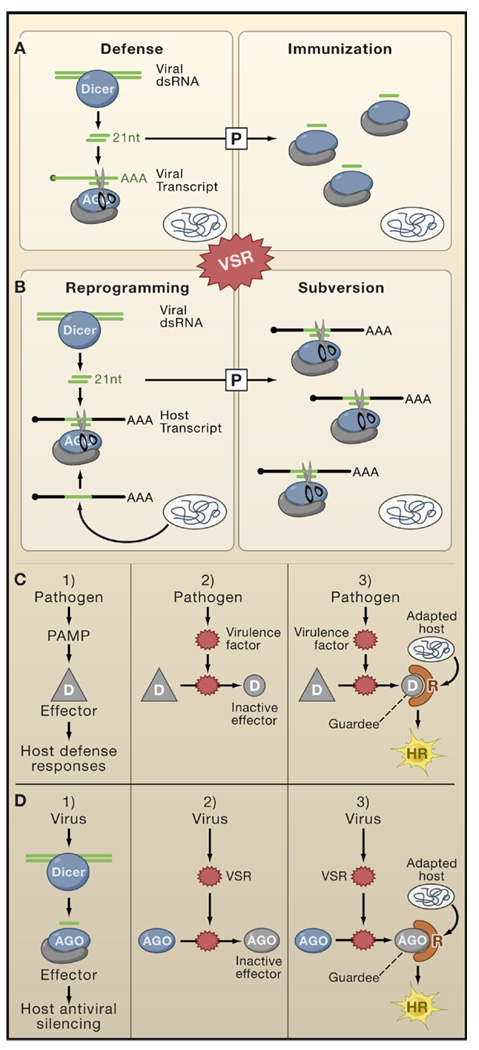Figure 4. The Virus-Host Arms Race.
Complex and multilayered interactions exist between RNA silencing pathways, VSRs, and other plant immune pathways.
(A and B) This model depicts the possibility that viRNAs produced in virally-infected plants not only contribute to antiviral defense (upper panels) but might sometimes benefit viruses if viRNAs share sequence homologies with host transcripts (lower panels). The model also depicts the possibility that immunization and subversion by viRNAs might operate in cells ahead of the infection front. The extent of defense and subversion is influenced by the timing and level of VSR expression.
(C) This model illustrates the guard hypothesis, which proposes that suppression of PAMP-elicited basal defense responses in plants by pathogens’ effector proteins is detected by dedicated host-encoded R proteins, sometimes resulting in a hypersensitive response (HR).
(D) An adaptation of the guard hypothesis model explains how VSRs might elicit a hypersensitive response in specific plant ecotypes. The model entails that some effectors of antiviral silencing (e.g., AGO1) are modified by VSRs (such as P0 of poleroviruses; Figure 3C).

